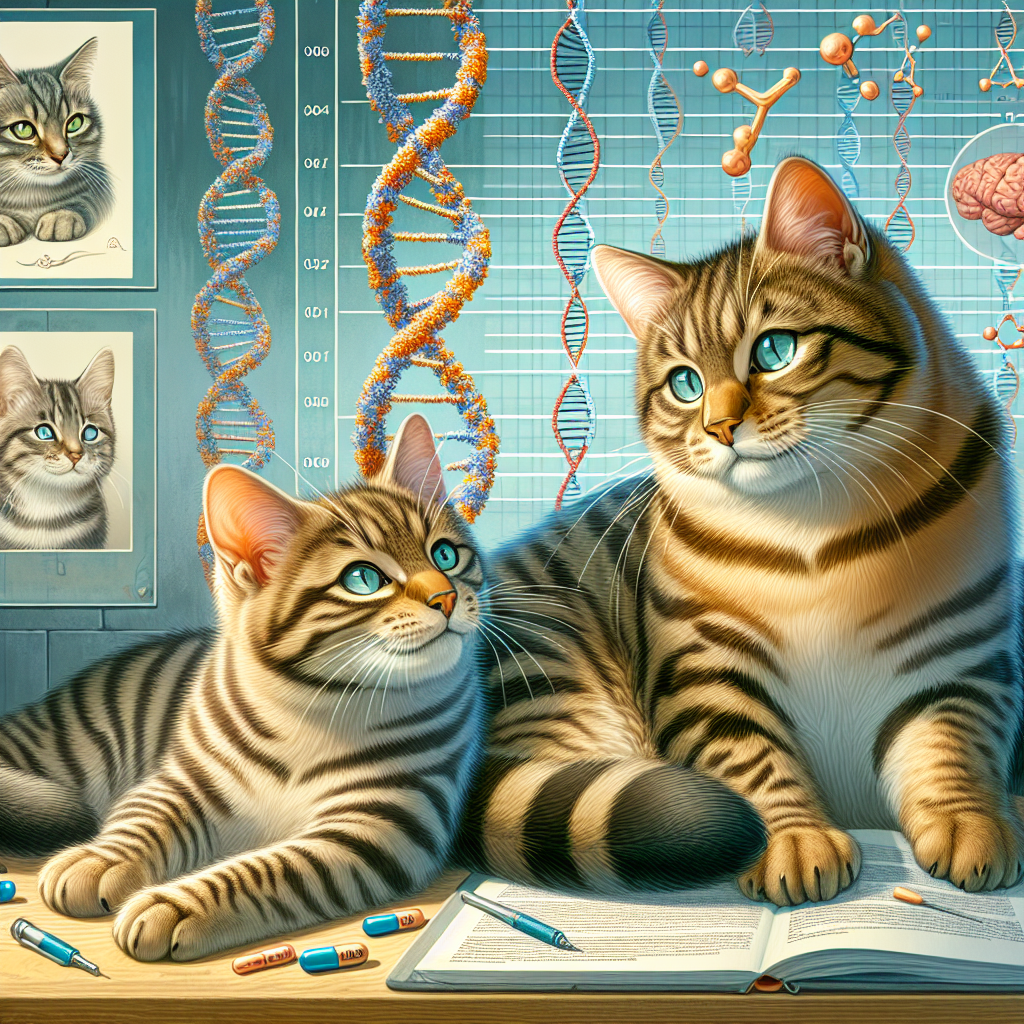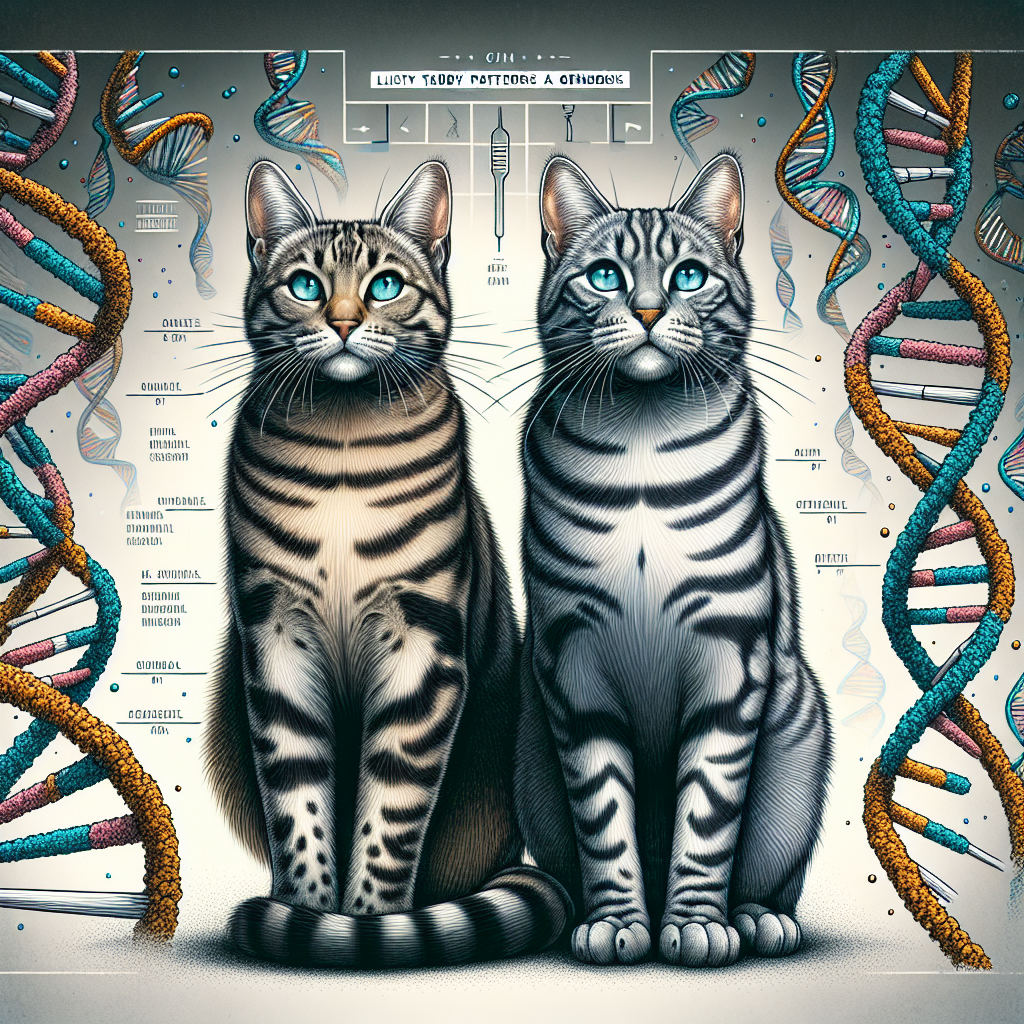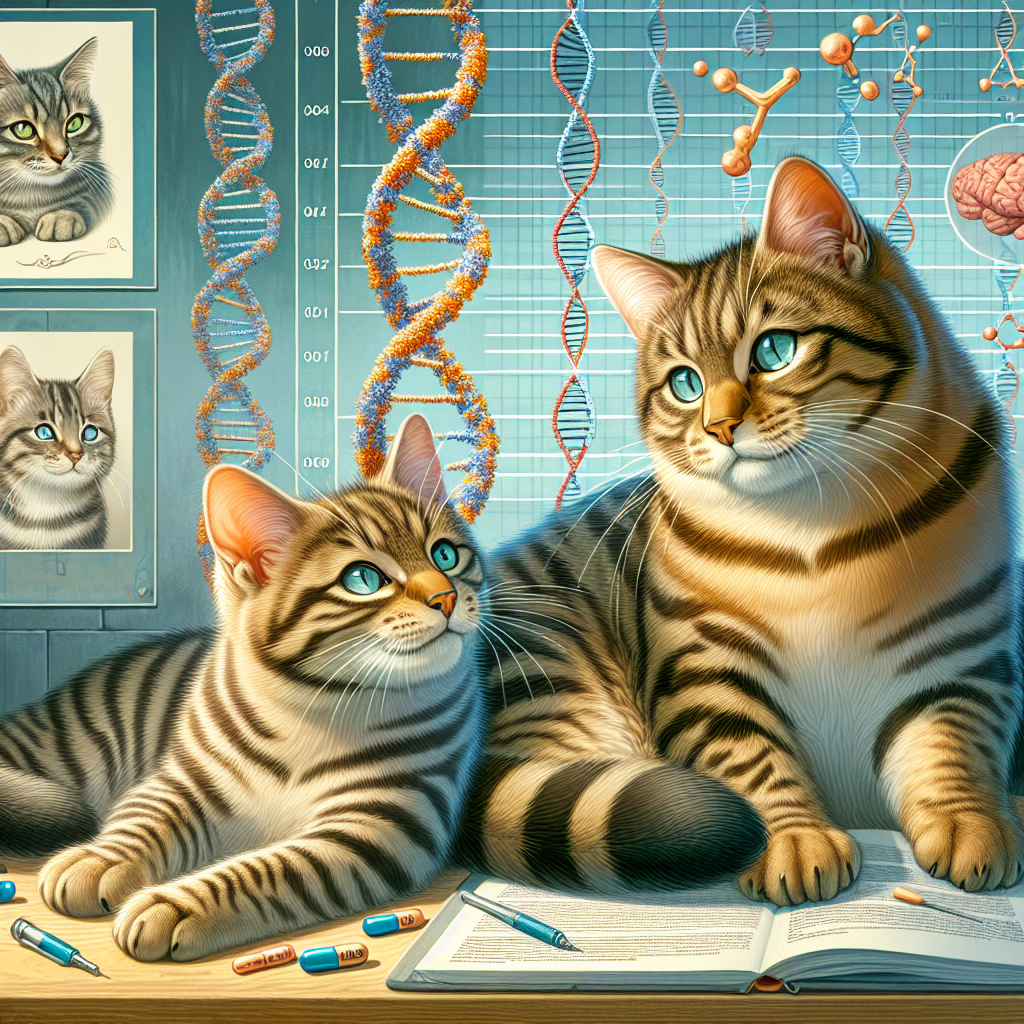Have you ever wondered about the gender distribution among tabby cats? Perhaps you’ve noticed that many of the tabby cats you’ve encountered are male. Well, you’re not alone in your observation! In this article, we’ll explore the fascinating world of tabby cats and delve into whether there is any truth to the claim that most tabby cats are males. So, get ready to uncover the secrets behind these adorable and mysterious felines!

Genetics of Tabby Cats
What is a Tabby Cat?
A Tabby cat refers to a coat pattern commonly found in domestic cats. This pattern is characterized by stripes, spots, or swirls on the fur. The Tabby coat pattern can occur in various colors, and it is often associated with a distinct “M” marking on the forehead. Tabby cats are not a specific breed but can be found in different breeds of cats. These patterns are a result of the genetics involved in coat color and pattern inheritance.
Determining the Sex of a Cat
Determining the sex of a cat is essential to understanding the population dynamics and genetics of Tabby cats. Unlike some other animals, determining the sex of a cat is relatively straightforward. Male cats have external genitalia, which are generally more prominent and visible. In contrast, female cats have a smaller and less noticeable genital opening. Additionally, spaying or neutering can be done to ensure that the population of Tabby cats is controlled and any potential health risks associated with breeding are minimized.
Genetic Basis of Tabby Coat Patterns
The genetic basis of Tabby coat patterns in cats is fascinating. These patterns are primarily influenced by the Agouti gene, which regulates the distribution of various pigments in the fur. The Agouti gene controls the production of eumelanin (black/brown pigment) and pheomelanin (yellow/red pigment) in different areas of the hair shaft. The interplay between these two pigments results in the striking patterns seen in Tabby cats, such as classic (stripes), mackerel (narrow stripes), ticked (agouti hairs), and spotted. Different variations in the Agouti gene and other genes involved in pigmentation can lead to the wide range of Tabby coat patterns observed in cats.
Prevalence of Tabby Cats
Popular Tabby Coat Pattern
Among the various Tabby coat patterns, the classic or “blotched” pattern is the most popular. This pattern consists of bold, swirling, or mottled dark stripes on a lighter background. This distinctive pattern is widely recognized and seen as the epitome of Tabby cats. However, it is important to note that other Tabby coat patterns, such as mackerel, ticked, and spotted, are also prevalent in cat populations.
Common Tabby Cat Colors
Tabby cats can exhibit a wide variety of colors, including brown, gray, black, and orange. The most common color seen in Tabby cats is brown or gray, often with black stripes. This coloration is known as “brown Tabby” or “gray Tabby.” However, Tabby coat patterns can be combined with other coat colors as well, creating unique and beautiful combinations. It is fascinating to see how different genes interact to produce the multitude of Tabby coat colors observed in cats.
Distribution of Tabby Cats
Tabby cats are found in various populations around the world. The prevalence of Tabby cats can vary depending on the geographic location and the specific breed of cats. It is worth noting that the Tabby coat pattern is not limited to a single breed but can be seen in both purebred and mixed-breed cats. Tabby cats are loved by many cat enthusiasts, leading to their presence in households worldwide.
Factors Influencing Perception
Misconceptions about Tabby Cats
There are several common misconceptions about Tabby cats that can influence people’s perception of them. One such misconception is the belief that all Tabby cats are males, which is not true. While it is true that Tabby patterns are more commonly seen in male cats, there are also many female Tabby cats. It is essential to dispel such misconceptions to ensure a more accurate understanding of the genetics and prevalence of Tabby cats.
Gender Stereotypes and Tabby Cats
Gender stereotypes can lead to biased perceptions about Tabby cats. The association of Tabby cats with masculinity may lead to the assumption that male Tabby cats are more common or desirable. This perpetuates the misconception that all Tabby cats are males and overlooks the unique qualities and beauty of female Tabby cats. It is important to appreciate and value Tabby cats of all genders equally, promoting a more inclusive and informed perspective.
Biased Reporting and Data Collection
Biased reporting and data collection can also contribute to the misconception that most Tabby cats are males. If males are more likely to be reported or observed as Tabby cats, due to their more visible reproductive organs, it can skew the data and create an inaccurate representation of the Tabby cat population. Addressing biased reporting and ensuring accurate data collection is crucial in understanding the true distribution and demographics of Tabby cats.
Sex Ratio in Tabby Cats
Males vs. Females in Tabby Cat Population
While it is commonly believed that most Tabby cats are males, research suggests that the sex ratio among Tabby cats varies depending on the specific population studied. Some studies have shown a slight male bias, while others have found an equal distribution of males and females. Therefore, it is inaccurate to assume that all Tabby cats are males, and it is essential to consider the population being studied when discussing the sex ratio of Tabby cats.
Influence of Sex-Linked Genes
Sex-linked genes can play a role in the prevalence and expression of Tabby coat patterns in cats. These genes are located on the sex chromosomes (X and Y) and can affect the inheritance and expression of certain traits. In the case of Tabby cats, certain sex-linked genes can influence the likelihood of a cat inheriting and displaying Tabby coat patterns. However, it is important to note that these genes do not exclusively determine the sex of a cat or the presence of Tabby patterns.
Environmental Factors Impacting Sex Ratio
In addition to genetic factors, environmental factors can also impact the sex ratio among Tabby cats. For example, during periods of intense breeding, certain environmental conditions may favor the survival or reproduction of one sex over the other, leading to an imbalance in the population. Furthermore, selective breeding practices and human intervention in cat populations can influence the sex ratio of Tabby cats. Understanding these environmental factors is crucial in analyzing and interpreting sex ratios in Tabby cat populations.

Behavioral Differences in Tabby Cats
Myths about Male and Female Cats
Several myths surround the behavior of male and female cats, which can be unfairly attributed to Tabby cats of a specific gender. For instance, it is often believed that male cats are more territorial and aggressive, while female cats are more affectionate and nurturing. These stereotypes can influence how people perceive and interact with Tabby cats of different genders. However, it is essential to recognize that individual variations and socialization play a significant role in a cat’s behavior rather than relying solely on gender assumptions.
Influence of Hormones on Behavior
Hormones can have a significant influence on the behavior of both male and female Tabby cats. Male cats produce higher levels of testosterone, which can contribute to territorial behavior and displays of dominance. Female cats, on the other hand, may exhibit certain behaviors associated with their reproductive cycle, such as being more affectionate or vocal during heat. However, it is important to note that behavioral traits are not solely determined by hormones and can be influenced by other factors, including genetics and environmental experiences.
Individual Variations and Personality Traits
Just like humans, cats have unique personalities and individual variations in behavior. While generalizations can be made about certain traits, it is crucial to recognize that each Tabby cat is an individual and may exhibit a wide range of behaviors and temperament. Some Tabby cats may be more active and playful, while others may be more calm and reserved. Understanding and respecting these individual variations is key to building strong bonds and providing appropriate care for Tabby cats.
Breeding Tabby Cats
Breeding Practices and Gender Ratios
Breeding practices can influence the gender ratio within Tabby cat populations. If breeders specifically select for certain traits associated with Tabby patterns, such as the classic or mackerel pattern, it may inadvertently impact the gender ratio of the offspring. However, it is important for responsible breeders to maintain a diverse gene pool and avoid continuously selecting for specific patterns or genders. This helps ensure the health and overall well-being of the Tabby cat population.
Importance of Genetic Diversity
Maintaining genetic diversity is crucial in breeding Tabby cats, as well as any other breed or population of cats. Consistently breeding for specific patterns or traits without considering genetic diversity can lead to an increased risk of genetic disorders and health issues. By promoting genetic diversity, breeders can help preserve the overall health and vitality of Tabby cats and ensure a sustainable future for the breed.
Selective Breeding for Tabby Patterns
Selective breeding can be used to enhance specific Tabby coat patterns within a breed or create new breeds with desirable patterns. However, it is important to prioritize the overall health and welfare of the cats and avoid extreme breeding practices that can lead to health problems or compromise their well-being. Responsible breeders consider both the appearance and genetic health of Tabby cats when selectively breeding for certain patterns.
Potential Health Issues
Genetic Disorders in Tabby Cats
Tabby cats, like all cats, may be prone to certain genetic disorders. While the prevalence of genetic disorders specifically associated with Tabby coat patterns is not well-documented, it is important for breeders and owners to be aware of potential health issues. Responsible breeding practices, health screenings, and routine veterinary care can help detect and mitigate genetic disorders effectively, ensuring a healthier and happier life for Tabby cats.
Link between Coat Patterns and Health
Research has shown potential links between specific coat patterns and certain health conditions in cats. For example, there have been associations between certain coat color patterns and an increased risk of deafness or eye abnormalities. While these associations are not exclusive to Tabby cats, it is important for breeders and owners to be proactive in monitoring the health of Tabby cats and providing appropriate care when necessary.
Specific Health Concerns for Male and Female Tabby Cats
Both male and female Tabby cats can be susceptible to certain health concerns. For instance, male cats may have a higher risk of developing urinary tract issues, while female cats may be more prone to mammary tumors. Regular veterinarian check-ups, a balanced diet, and providing a safe and enriched environment can help minimize potential health risks and ensure the overall well-being of Tabby cats, regardless of their gender.
Tabby Cats in Pop Culture
Famous Tabby Cats
Tabby cats have made their mark in pop culture with several famous feline characters. One notable example is Garfield, the lovable and lazy orange Tabby cat from the comic strip created by Jim Davis. Other famous Tabby cats include Puss in Boots from the Shrek franchise and Church from Stephen King’s novel “Pet Sematary.” These fictional characters have captured the hearts of many and further reinforced the popularity and recognition of Tabby cats.
Depictions of Tabby Cats in Media
Tabby cats have been featured in various forms of media, including movies, television shows, and books. Their distinctive coat patterns and unique personalities often make them endearing and relatable characters. From animated films like “The Aristocats” to depictions in children’s literature, Tabby cats have become icons in the world of entertainment, adding to their widespread appeal and popularity.
Symbolism and Association with Tabby Cats
Tabby cats have been associated with various symbolic meanings throughout history and different cultures. In some belief systems, Tabby cats are considered to bring good luck, fertility, or protection against evil spirits. They have also been associated with resilience, adaptability, and independence. These symbolic associations have contributed to the enduring fascination with Tabby cats and their place in popular culture.
Tips for Taking Care of Tabby Cats
Grooming and Maintaining the Tabby Coat
Proper grooming is essential for maintaining the beauty and health of a Tabby cat’s coat. Regular brushing helps remove loose hairs, prevents matting, and stimulates blood circulation. Additionally, specific Tabby coat patterns may require specific grooming techniques. For example, long-haired Tabby cats may need more frequent grooming to prevent tangles and matting. Regular grooming sessions also provide an opportunity for bonding and strengthening the relationship between the owner and their Tabby cat.
Feeding and Nutritional Needs
Feeding a balanced and nutritious diet is crucial for the overall health and well-being of Tabby cats. Consultation with a veterinarian can help determine the appropriate type and amount of food based on factors such as the cat’s age, weight, and health condition. Proper nutrition supports a healthy coat and skin, as well as optimal organ function and overall vitality. Providing fresh water, regular meal times, and monitoring portion sizes are essential aspects of maintaining a healthy diet for Tabby cats.
Keeping Tabby Cats Healthy and Happy
Ensuring the health and happiness of Tabby cats involves various aspects of care. Regular veterinary check-ups, vaccinations, and parasite prevention are vital for maintaining their overall well-being. Providing a safe and stimulating environment with appropriate toys, scratching posts, and hiding spots can help prevent boredom and destructive behavior. Social interaction, affection, and playtime are also essential for providing mental and emotional stimulation, strengthening the bond between the owner and their Tabby cat.
Conclusion
Tabby cats, with their unique coat patterns and individual personalities, have captured the hearts of many cat lovers worldwide. Understanding the genetics behind Tabby coat patterns, debunking misconceptions, and appreciating the diversity within the Tabby cat population are crucial in promoting an accurate and inclusive perspective. By providing proper care, implementing responsible breeding practices, and being aware of potential health issues, we can ensure a bright and healthy future for these beloved feline companions.

